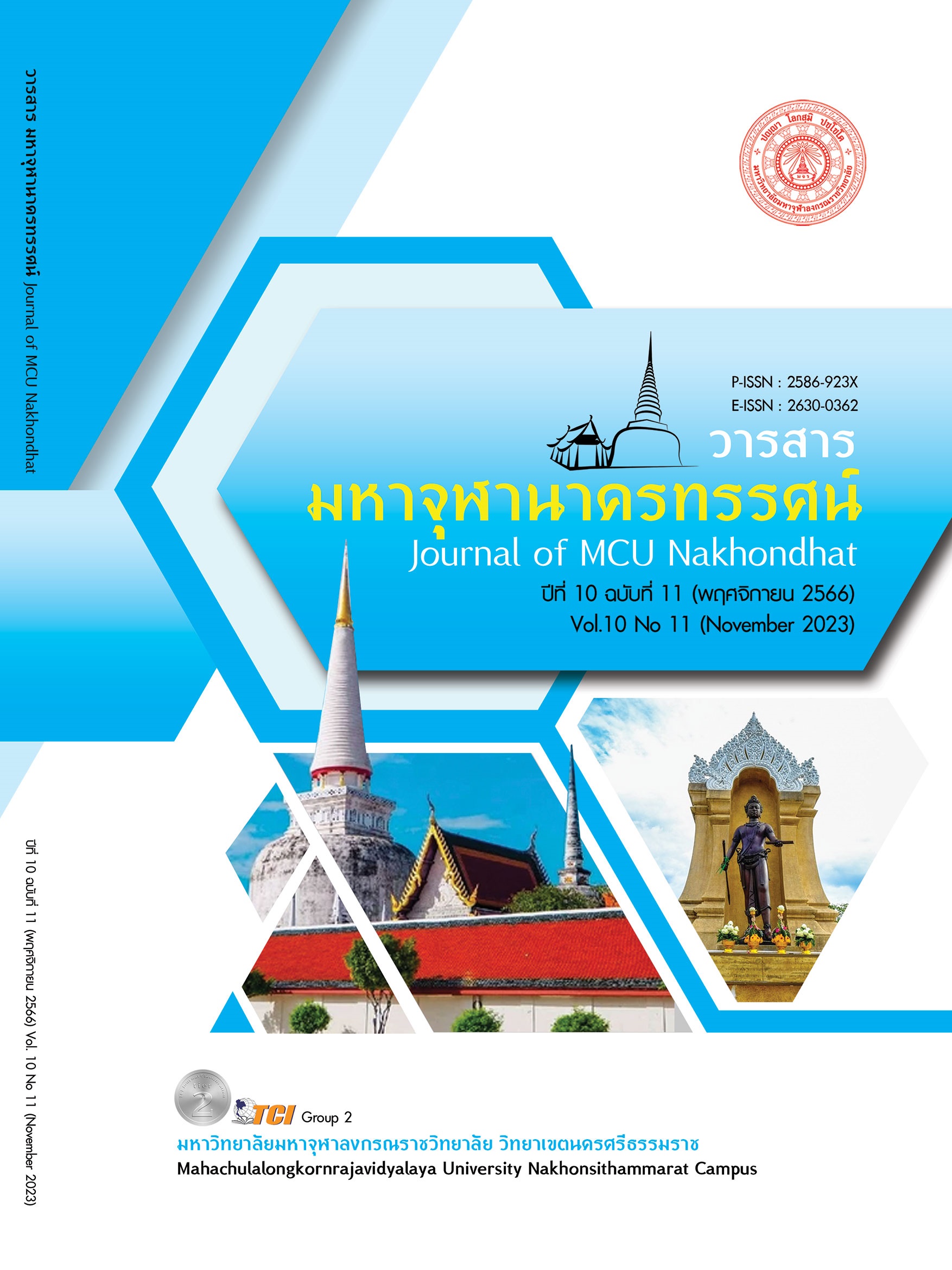แนวทางเสริมสร้างทรัพยากรทางการศึกษาในยุคดิจิทัลของมหาวิทยาลัย เทคโนโลยีฝู๋เจี้ยน ในมณฑลฝู๋เจี้ยน ประเทศสาธารณรัฐประชาชนจีน
Main Article Content
บทคัดย่อ
การวิจัยครั้งนี้มีวัตถุประสงค์เพื่อ 1) ศึกษาการเสริมสร้างทรัพยากรทางการศึกษาในยุคดิจิทัล 2) ประเมินคุณลักษณะแนวทางเสริมสร้างทรัพยากรทางการศึกษาในยุคดิจิทัล 3) ศึกษาแนวทางเสริมสร้างทรัพยากรทางการศึกษาในยุคดิจิทัลของมหาวิทยาลัยเทคโนโลยีฝู๋เจี้ยนในมณฑลฝู๋เจี้ยน ประเทศสาธารณรัฐประชาชนจีนใน
โดยใช้รูปแบบการวิจัยแบบผสมผสาน กลุ่มตัวอย่าง ประกอบด้วย 1) ทรัพยากรด้านบุคคล 2) ทรัพยากรด้านการเงิน 3) ทรัพยากรด้านวัสดุ อุปกรณ์ และอาคารสถานที่ 4) ทรัพยากรด้านบริหารจัดการ 5) ทรัพยากรด้านเวลา 6) ทรัพยากร ด้านเทคโนโลยีสารสนเทศ ประชากรที่ใช้ในการวิจัย ได้แก่ มหาวิทยาลัยเทคโนโลยีฝู๋เจี้ยน ในมณฑลฝู๋เจี้ยน ประเทศสาธารณรัฐประชาชนจีน กลุ่มตัวอย่างที่ใช้ในการศึกษาครั้งนี้ ได้แก่ ผู้บริหาร และอาจารย์ประจำการมหาวิทยาลัยเทคโนโลยีฝู๋เจี้ยน ในมณฑลฝู๋เจี้ยน ประเทศสาธารณรัฐประชาชนจีน โดยการสุ่มแบบเจาะจง
รวมทั้งสิ้น 242 คน ผลการวิจัย พบว่า การเสริมสร้างทรัพยากรทางการศึกษาในยุคดิจิทัลของมหาวิทยาลัยเทคโนโลยีฝู๋เจี้ยน ในมณฑลฝู๋เจี้ยน ประเทศสาธารณรัฐประชาชนจีน ผู้บริหารต้องให้การสนับสนุน และมีทัศนคติที่ดีต่อการใช้ระบบสารสนเทศ ส่งเสริมให้มีการพัฒนาให้มีประสิทธิภาพอยู่เสมอขึ้นอยู่กับสถานการณ์และสภาวะที่เกิดขึ้น สนับสนุนให้บุคลากรมีทัศนคติที่ดีในการทำงาน กระตุ้นให้เกิดพฤติกรรมด้านการเงินที่เหมาะสม ผู้บริหารสามารถจัดสภาพแวดล้อมในสถานศึกษาให้เอื้ออำนวยต่อการปฏิบัติงานของบุคลากร สนับสนุนให้บุคลากรมีความรักความสามัคคีต่อกันและกันสามารถจัดทำกิจกรรมปฏิทินปฏิบัติงานที่สอดคล้องกับระบบการเงินของหน่วยงาน และเกิดประสิทธิภาพสูงสุดต่อสถานศึกษาที่ครอบคลุมเป้าหมายการบริหารจัดการองค์กรสู่ความเป็นเลิศบนฐานของการบริหารจัดการความรู้และเทคโนโลยี การพัฒนาองค์กรที่มุ่งเน้นทรัพยากรบุคคลที่มีคุณภาพในการสร้างแผนงานและกลยุทธิ์องค์กรที่ได้มาตรฐานสากล
Article Details

อนุญาตภายใต้เงื่อนไข Creative Commons Attribution-NonCommercial-NoDerivatives 4.0 International License.
เอกสารอ้างอิง
เจิง หยูนเฟิง และเซี่ย หญุน. (2018). การบริหารทรัพยากรมนุษย์เบื้องต้น. ปักกิ่ง: สำนักพิมพ์มหาวิทยาลัยซิงหัว.
ปรัชญา เวสารัชช์. (2545). หลักการจัดการศึกษา. กรุงเทพมหานคร: สำนักงานปฏิรูปการศึกษา.
สำนักงานเลขาธิการสภาการศึกษา. (2562). รูปแบบการระดมทรัพยากรเพื่อการศึกษา. กรุงเทพมหานคร: พริกหวานกราฟฟิค.
หวาง เจินอู๋ และเจา หงป๋อ. (2011). พฤติกรรมองค์กร. ปักกิ่ง: สํานักพิมพ์มหาวิทยาลัย ซิงหัว.
Brown, J. W. et al. (1985). AVInstruction Technology Media and Methods. New York: McGraw - Hill.
Damayanti, F. P., & Mirfani, A. M. (2021). An Analysis of Digital Leadership in the Pandemic Covid - 19 Era. In 4th International Conference on Research of Educational Administration and Management. New York: Atlantis Press.
Glickman, C. D. (1987). Good and for Effective School: What Do We Want? The Phi Delta Kappan, 68(8), 622 - 624.
Martin, A. & Grydziecki, J. (2006). Digital: Concepts and tools for digital literacy development. ITALICS. Innovation in Teaching and Learning in Information and Computer Sciences, 5(4), 246 - 264.
Parson, C. (2994). The Politics and practice of Quality in Quality Improvement in Education : Case Studies in School. London: David Fulton.
William Siams Bainbridge. (2012). Miller, C. Digital Leadership: Using the Internet and SocialMedia to Improve the Lives, Well-Being and Circumstances ofOthers. Journal of Family and Consumer Sciences, Alexandria, 110(1), 45 - 48.
William T. Greenwood. (1965). The Politics and practice of Quality in Quality Improvement in Education : Case Studies in School. London: David Fulton.


